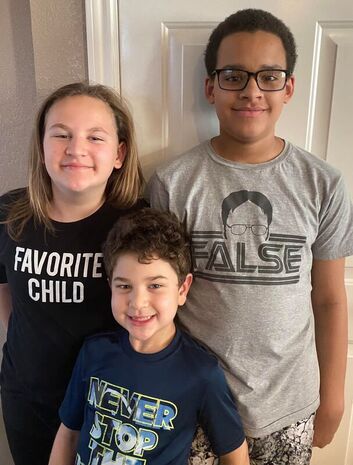|
I'll begin by saying how lucky I am. There, I've blown the ending, but I wanted to share my story and hope you take something from it.
A couple months ago, I was astonished to see a bright pink spot on my chest, just left of the sternum. I called my dermatologist, but waited several anxious weeks for an appointment. The spot began to change, darkening a little and developing a somewhat irregular border. When I finally saw the doctor, she took one look at the worrisome spot and said, "That's nothing. It will fade. No worries." Sigh of relief. Then she did an all-over skin check and found two spots that looked suspicious, most likely a couple of basal cell carcinomas, the least risky of skin cancers. So she injected a bit of local anesthetic and took a tiny sample of the one on my temple. The one on the back of my neck, she "scraped and burned" after putting in the anesthetic. Relieved, I went on with my day. About four years ago, the same dermatologist biopsied several spots on my face and referred me to a skin cancer surgeon. In his office, he removed four basal cell carcinomas, two near my nose, one in the corner of my eye and another in my scalp, so I wasn't too concerned. Until I received a call from the dermatologist the following Monday. She sounded more than a little rattled when informing me that the spot on my temple was a melanoma, a potentially deadly skin cancer. This spot did not look like any pictures of melanomas I had seen. It was round (smaller than a pea), flat, pale pink and had even borders. In fact, the doctor had photographed it the first time I saw her and said she would keep an eye on it. So off I went to the skin cancer surgeon. He did a much larger biopsy sample and sent it off to the lab to confirm her diagnosis. The surgeon shared the pathology finding with the Baylor tumor conference (large group of doctors) to get more direction about how to proceed. One possibility was to get a sentinel node biopsy, so they could see if there was any spread. The tumor conference agreed that this was not necessary, that it was a Stage 0 in situ (Latin for "in place") melanoma. Another piece of good news. I still faced removal of the margins around the larger biopsy, a two-day "slow Mohs" procedure. After his assistant pin-pricked me about a dozen times with anesthesia (ouch), the surgeon removed a disk of tissue somewhere between a the size of nickel and a quarter and applied a pressure bandage. The tissue was sent to a lab to be dehydrated and examined for any remaining cancer cells. Everything was clear. Yay. Next step was closing the wound. The surgeon incised a triangle above and below the wound, so it could be neatly closed with many tiny stitches to ensure a good cosmetic result. Another pressure bandage and home I went. Now I look like I lost a fight. My eye is swollen half-closed and I'm pretty sure I'll end up with a black eye, but I'm assured the scar will heal beautifully. As a kid (before sunblocks), I had many painful, blistering sunburns. I remember wearing one of my brother's undershirts to swim in, but that did not protect my face. So here's the drill, folks. Wear sunscreen and stay out of the sun when possible. Get a yearly skin check from a dermatologist and report anything suspicious to the doctor. Melanoma killed nearly 10,000 Americans in 2016, so it's nothing to fool around with. Take it from me.
0 Comments
Leave a Reply. |
AuthorI'm Chris Barabasz, retired from a 35-year career managing communications for health care development (that's fundraising for you civilians). I'm a wife, mother, grandmother and freelance writer. My husband Andy and I moved from Delaware to Texas to be closer to our daughters and three adorable grandchildren. Archives
January 2024
Categories |

 RSS Feed
RSS Feed